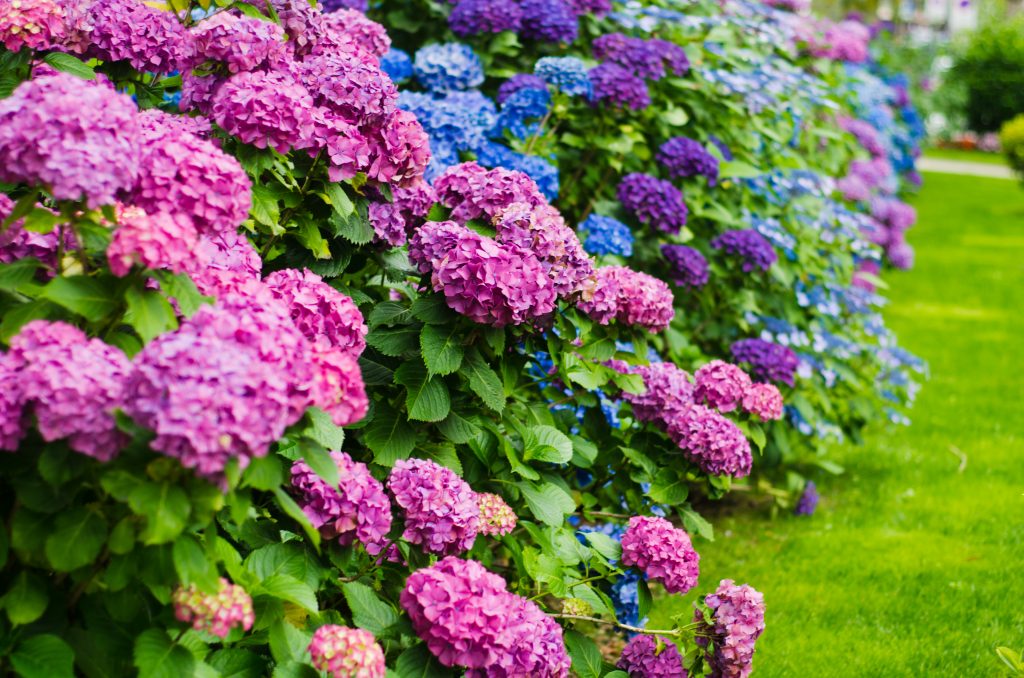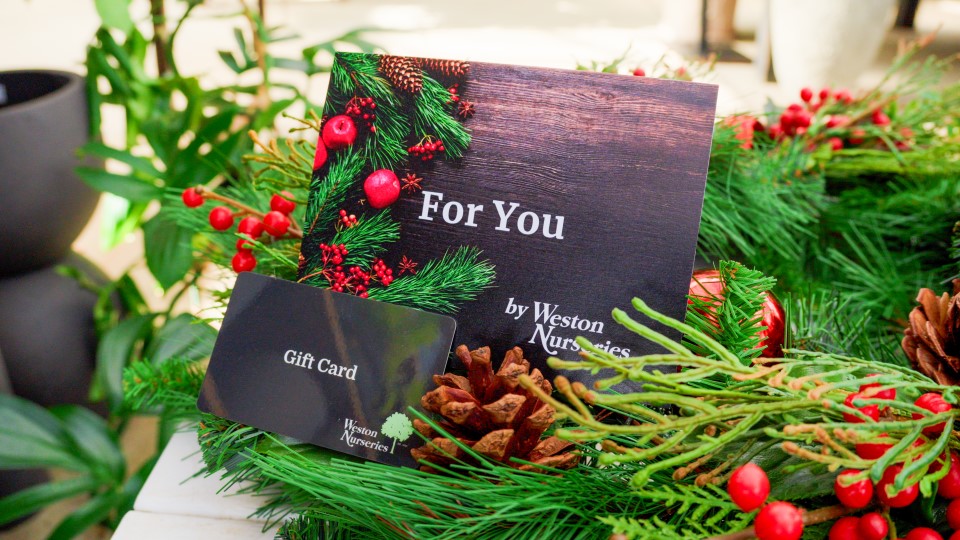With dozens of varieties and cultivars readily available at garden centers, hydrangeas continue to be rightfully among the most popular choices for gardens in this region. Most of us immediately envision the hydrangea that’s commonly considered the “signature Cape Cod” landscape plant: the blue-flowering mophead hydrangea (H. macrophylla). In fact, there are actually six main types of hydrangeas commonly grown in the Northeast. Familiarize yourself with the different types prior to purchasing so that you choose the right plant for your particular location and application. Our garden center staff can happily assist you in choosing the perfect hydrangea. If you already have hydrangeas in your landscaping, recognizing which type of hydrangea it is will help you care for it properly and thus get the most out of it.

Pruning of hydrangeas can be a confusing issue for some and improper pruning can result in an absence of blooms. One key question to answer prior to getting out the shears is does your type of hydrangea bloom on old wood or new wood? Briefly, old wood means that buds for NEXT year’s blooms are formed at the end of this year’s growing season. These types of hydrangeas, primarily big leaf, oakleaf, and mountain hydrangeas, that bloom on old wood, can be pruned just after flowers fade to encourage new flower buds to develop on old stems. They can also be pruned back in early spring just after leaves emerge. Hydrangeas that flower on new wood, smooth and panicle types, have buds that form on new growth during the current growing season. These types of hydrangeas should be pruned in late winter or early spring to encourage new stem growth. In general, hydrangeas are very forgiving; if you accidently prune at the wrong time, you may not get blooms for the season but your shrub will be fine! Don’t hesitate to consult us with any pruning question.
1. Big leaf Hydrangea (Hydrangea macrophylla)
These stalwart showstoppers of the summer garden can be found in shades of pink, blue, white lavender, and even lime green. Many cultivars will bloom continuously throughout the summer. There are two types of big leaf hydrangea – mophead and lacecap.
a. Mophead : They are the most easily recognizable big leaf hydrangeas, with large globular flowerheads.

b. Lacecap: Identical to mopheads except in the shape of their blooms which consist of a center cluster of small fertile flowers ringed by larger showy infertile flowers.
Bloom time: July to August, some cultivars re-bloom until frost.
Size: Height 3-6 ft., spread 3 to 6 ft.
Location: Choose a part shade location. Someplace with full morning sun and afternoon shade is best. Shelter from drying winds. Minimum hardiness zone 5-6.
Soil: Rich, well-drained soil. Be sure to mulch to retain soil moisture.
Pruning: Blooms primarily on old wood. Some varieties bloom on both old and new wood, providing blooms throughout the summer and early fall. Best to prune in late May, after the leaves start to come out. Cut stalks just above the point where the leaves have emerged. You can prune out weak or winter damaged stems of all types at the soil line in late winter/early spring.
In early fall, consider some light pruning as blooms fade. Do not cut off old wood, as this is what will produce most of next year’s blooms. Deadhead spent blooms and remove weak or dead stems.
Winter Care: Continue to water until hard frost. Top dress around plant with compost and apply layer of mulch. Consider loosely wrapping plants in burlap for extra protection from extreme cold and drying winds, particularly in zone 5.
Color change: Add aluminum sulfate to soil to make flowers bluer or add lime to make them pinker. Amend soil in late autumn or early spring, far in advance of flowering.
2. Mountain Hydrangea (Hydrangea serrata)
Native to Japan. Flowers similar to lacecap hydrangeas, but a smaller, more compact shrub with toothed leaves.
Bloom time: June to August
Size: Height 2 to 4 ft., spread 2 to 4 ft.
Location: Same as big leaf hydrangea. Minimum hardiness-zone 5-6.
Soil: Same as big leaf hydrangea.
Pruning: Same as big leaf hydrangea – Blooms on old wood.
Winter Care: Same as big leaf hydrangea.
Color Change: Same as big leaf hydrangea.
3. Oakleaf Hydrangea (Hydrangea quercifolia)
Native to the U.S., blooms reliably into Zone 5 with cone-shaped white flower panicles that open during June and July, morphing to pink and reddish tones as they age, holding well into fall. The dark green oak-leaf shaped foliage is their most distinctive feature. Unique among the hydrangeas, the leaves turn red, yellow, bronze, burgundy and purple in autumn, lasting well into late November.
Bloom time: May to July
Size: Height 6 to 8 ft., spread 6 to 8 ft., some smaller cultivars 2 to 4 ft.
Location: Full sun to part shade.
Soil: Same as big leaf hydrangea. Minimum hardiness-zone 5-6.
Pruning: Very little pruning required – see big leaf hydrangea. Blooms on old wood.
Winter Care: Same as big leaf hydrangea.
Color Change: Typically white blooms turn purplish pink as they age, not amenable to soil additives for color change.
4. Panicle Hydrangea (Hydrangea paniculata)
Named for its pale green, creamy, cone shaped flower panicles. Blooms last into fall, gradually turning to pink, then brown. Native to eastern Asia, the species is well adapted to this region, winter hardy to at least Zone 4 (most of New England), grows quickly in most any soil, tolerates seashore conditions, prefers sunny exposed locations and is long lived. Grown as a multi-stem shrub or single trunk tree, it can grow high and wide, or stay small, depending upon the cultivar. Spent flowers that remain on the plants in the garden should be removed before growth begins next spring, but be sure to enjoy their appearance dusted with the snow in winter.
Bloom time: July to September
Size: Height 8-15 ft., spread 6-12 ft. some smaller cultivars 2-4 ft.
Location: Full sun to partial shade. Minimum hardiness-zone 4.
Soil: Moist, well-drained soil, mulch to retain moisture.
Pruning: Blooms on new wood so prune in late winter/early spring to shape and promote vigorous growth and larger flowers.
Winter Care: No special care required.
5. Smooth Hydrangea (Hydrangea arborescens)
Native to the U.S., also known as Wild Hydrangea, these shrubs produce globe shaped, pale green blossoms that turn to white and eventually fade to brown. Pink cultivars also available. Will tolerate road salt.
Bloom time: June to September
Size: Height 3 to 5 ft., spread 3 to 5 ft., some smaller cultivars 1.5 – 3 ft.
Location: Full sun to part shade. Minimum hardiness-zone 4.
Soil: Average, medium moisture, well-drained soil. Needs consistent moisture, relatively drought intolerant. Make sure to mulch in order to retain moisture.
Pruning: Blooms on new wood so prune in late winter/early spring. Plant may be pruned back close to the ground to encourage vigorous growth. If not pruned back, any damaged stems should be removed. Deadheading not necessary.
Winter Care: No special care needed.
6. Climbing Hydrangea (Hydrangea anomala petiolaris)
Native to Asia, this vigorous woody vine with heart-shaped foliage and large, fragrant, white, lacy clusters of June flowers is an attractive covering for a walls and fences. Horizontal branching can give it a sculptural appearance and peeling bark adds winter interest. Slow growth in first 3 to 5 years, but quite vigorous once roots established.
Bloom time: May to July
Size: Over many years, can reach 30 to 80 ft. in height (when supported).
Location: Full sun to part shade. Minimum hardiness-zone 5.
Soil: Rich, moist, well-drained soil.
Pruning: Blooms on old wood. Prune in summer after blooming to control size.
Winter Care: No special care needed.







